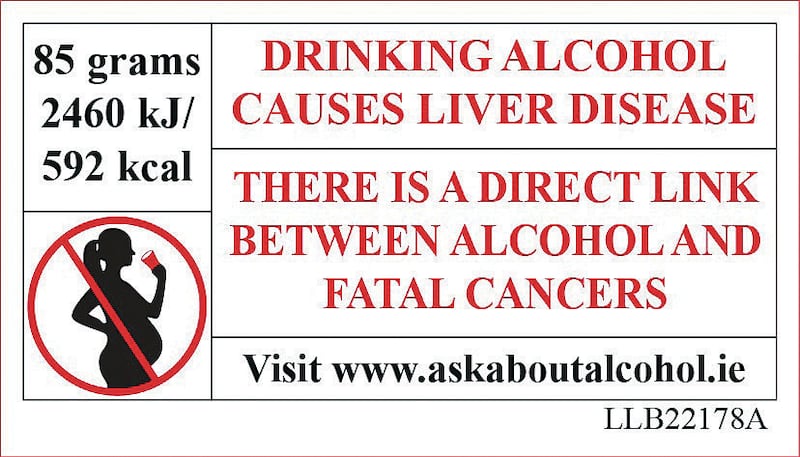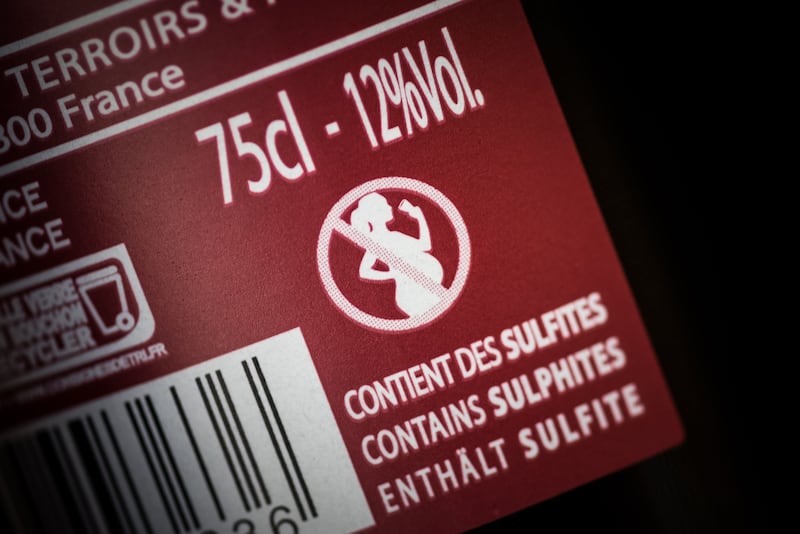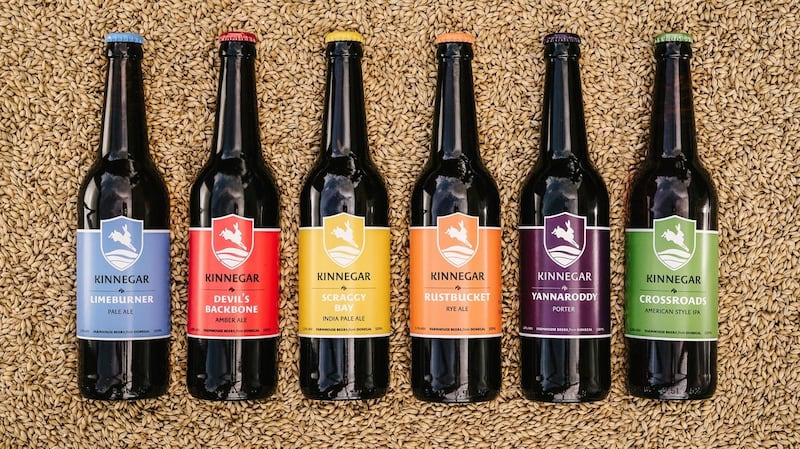Plans to introduce health warning labels on alcohol could have adverse implications for Irish consumers.
From May next year the State will be the first country in the world to make cancer warnings on alcohol bottles mandatory.
As preliminary designs for the warning have begun circulating within the trade, the prospect of labelling bottles solely for the Irish market could deter small producers around Europe, who may decide it is not worth the hassle supplying to the Irish market.
The labels are unique to Ireland and so must be added either by the producer or, possibly, the importer.
READ MORE
This would appear to favour bigger companies who usually produce larger quantities of cheaper wine. Smaller importers and retailers who typically deal with a few cases of each wine may face insurmountable difficulties.
Last November, Stephen Donnelly, then Minister for Health, said in the Dáil: “Health warnings on the labels of alcohol products will inform consumers that alcohol consumption is not risk-free so that they can make an informed choice about their drinking.
“The labelling law also requires that those selling alcohol online or in on-licence premises must provide health information to consumers.”
All bottles, cans and other containers must contain the following warnings and health information on a back label:
1. Drinking alcohol causes liver disease
2. There is a direct link between alcohol and fatal cancers
3. A warning symbol for drinking when pregnant
4. Visit www.askaboutalcohol.ie
The label should also state the quantity of grams of alcohol and the energy value expressed in kilojoules and kilocalories. The label must be at least 60mm wide and not less than 30mm high surrounded by a black border.
In addition, licensed premises will be required to display health warning and information notices at every entrance as well as having a record of the grammes and energy of every product on sale.

The health risks of excess alcohol consumption are well established, so few can argue with alerting the public to the potential harms associated with consuming wine, beer and spirits.
Yet the Health Research Board on its website states that its research shows that “just 21 per cent of the Irish public know of the risk associated between alcohol use and breast cancer ... Having clear information on the labels of alcohol products is an important way to ensure consumers are aware of these potential harms”.
These warnings are, as they point out, “more detailed than anything seen previously in Ireland or elsewhere”.
However, because the labels are unique to Ireland they must be added either by the producer or, possibly, the importer; it is still unclear where the responsibility will lie.
This would appear to favour bigger companies who usually produce larger quantities of cheaper wine. Importers who ship containers filled with thousands of cases of a single wine should be able to apply the new warning labels at source without too much difficulty – although supermarkets such as Tesco, Lidl and Aldi draw from UK stocks and could face problems of their own.
Smaller importers and retailers who typically deal with a few cases of each wine are likely to face the greatest difficulties. Most of the small producers around Europe from whom they buy will simply refuse to add the new back label. For many, Ireland is a small niche market and they can easily switch their wines – which are often in huge demand – to other countries.

[ US surgeon general urges cancer warnings for alcoholic drinks ]
It has yet to be clarified whether drinks importers can add the labels themselves once the stock arrives in Ireland.
If they are permitted, they will have the job of prising open thousands of cases (including wooden cases) of different wines to apply the labels. As most of the wines are held in a bonded warehouse controlled by Revenue, the importer cannot easily access stocks which are usually delivered unopened to the purchasing restaurant or shop by a third party.
In addition, as the calorie and alcohol levels vary from wine to wine, each label will be unique to each wine variety in every vintage, making it impossible to apply the same blanket label across a range of wines.
It is also likely that some producers, such as luxury champagne companies, will simply refuse to allow the labels appear on their bottles and withdraw from the market.
An expensive prospect that is very daunting for small businesses
— Libby Carton of Kinnegar Brewing
Then there are questions around “en primeur” sales, whereby consumers buy wine 18 months before the wine is bottled. Legally the wine, when shipped, belongs to the consumer. Who is responsible in this scenario for applying the back label? Opening a case and adding the label will devalue the wine so investors may opt to buy their wine elsewhere, possibly looking to Northern Ireland.
Will top hotels and restaurants who have built up a cellar of ageing wines over many years, now have to work out the calories and apply labels on the back of every bottle?
It is not just the wine trade that will feel the effects. Many craft beers and speciality spirits may also disappear, including from our own craft brewers who tend to produce small quantities of multiple beers and often export some.
“It’s just a huge wallop on top of the DRS (Deposit Return Scheme). An expensive prospect that is very daunting for small businesses,” says Libby Carton of Kinnegar Brewing in Letterkenny, Co Donegal.

“We make 12 core range beers and then 15 other single batch beers in a year. Labels will have to be redesigned using a template customised for each beer. The vital statistics for each beer will have to be measured. Export is going to be very difficult; no other country will understand why these warnings are there.”
Jimmy Redmond of Redmond’s Off-Licence in Ranelagh, Dublin, agrees. “If you walk into my shop the first thing you see is beer. But a lot of the international brewers will not label for the Irish market. It’s too small.
“I will lose a minimum of 30 per cent of the beers in my fridge. It will be the same with wine and spirits. It is the small ones that will suffer. I’ve got to fill my shop with other available stuff and forget about the beautiful wines and spirits that I now carry.”
The upshot of this may well be that many wines, beers and spirits disappear from our shelves, and usually the most interesting artisan products. One importer I talked to already had plans to cut their range substantially and raise their prices by 2 per cent to cover the extra cost.
Redmond says: “Can we label them ourselves? I don’t know. We haven’t been told, but the producer still has to supply the details for the label, and every vintage of every wine will require a different label.
“If they just took off the kilojoules and kilocalories requirement, then I could print and apply the label myself. Does the consumer know what a kilojoule means? There is one important message the label should have – alcohol causes cancer and liver disease – and everything else is secondary.”
[ We are falling out of love with booze: Why Ireland is drinking less ]
Redmond was one of several retailers I talked to who accepted that the health warnings were not a bad idea.
Those in favour of the legislation, including Alcohol Action Ireland, Drinkaware.ie, and the Health Research Board, argue that it is necessary to inform the public and to bring our consumption of pure alcohol down to less than nine litres per person.
Opponents, including most representatives of the drinks trade counter that alcohol consumption has been dropping steadily here for the last two decades.
“Alcohol habits are already changing and quickly,” Redmond says. “People are drinking less and it has speeded up since Covid. We have seen a noticeable drop. They drink less but buy a better bottle at the weekend. We have also noticed a big uplift in alcohol-free wines and beers.”
A doctor writes:
A report last September from the American Association for Cancer Research found that six types of cancer are linked to alcohol consumption: head and neck cancers; oesophageal cancer; liver cancer; breast cancer; colorectal cancer and stomach cancer. And in January, the US surgeon general Dr Vivek Murthy issued an advisory that outlined links between alcohol and cancer risk, and offered recommendations to reduce alcohol-related cancers. The surgeon general called for updated warning labels on alcoholic beverages that make cancer risks clear, in the same way that cigarettes carry explicit warnings about health risks.
His advisory states that about five more women in a hundred would develop cancer by consuming two drinks a day; about three more men in a hundred would develop cancer by consuming the same amount of alcohol.
A major study in The Lancet that looked at the global burden on disease of drinking alcohol found the harmful use of alcohol was particularly concentrated in males aged 15–39 years, primarily in Australasia, western Europe and central Europe. It concluded: “These findings highlight the need for tailored guidelines that discourage alcohol consumption among young people, as well as alcohol control policies and interventions that are targeted especially towards young males.”
However, it also noted the relationship between moderate alcohol use and health is complex and has raised a significant amount of controversy in the scientific literature. For example, some research suggests there is a protective effect on heart disease of up to three standard drinks per day.
But the time is right for Ireland to support the development of tailored guidelines and recommendations on alcohol consumption by age. As the majority of the world’s population consuming harmful amounts of alcohol are young adults (predominantly young males), it would be opportune for us to take a global lead in minimising health loss due to alcohol consumption by developing warning labels aimed at this young demographic. - Dr Muiris Houston















